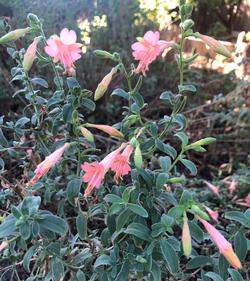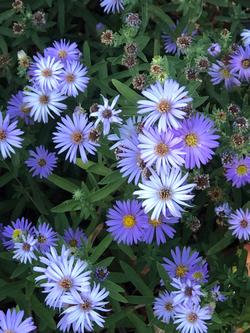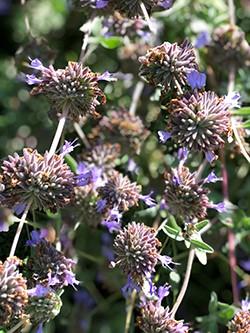Spring 2023
Native Plant Gardening in the Spring
Native Plant Gardening in the Spring
by Laurinda Ochoa

Yes! Although March and April are too late to start a spring-blooming native wildflower garden, there is still time to plant summer and fall blooming California native perennials. However, it is important to do the following:
- pick plants suitable for your garden conditions (go to https://www.calscape.org/ and type in your address to see what plants are local to your area)
- water your new plantings during our hot summer and fall months while they become established.
Here are three native plant groups that bring color and pollinators to our yards during the summer and fall – penstemons, asters, and salvias.
Penstemons

There are over 100 varieties of penstemon native to California. They grow in a variety of garden conditions, but generally favor full sun, good air circulation and drainage, and don’t want to be overwatered or fertilized. When happy, penstemons will survive in the home garden with little care and begin to reseed.
California native penstemons range in color from white, yellow, pink, blue, purple and red. There are many varieties and cultivars that grow in our county’s bay and inland areas and are available at local nurseries. These include:
- Foothill Penstemon (Penstemon heterophyllus)
- Scarlet Bugler (P. centranthifolius)
- Royal Penstemon (P. speciosus)
- Margarita BOP (P. heterophyllus 'Margarita BOP')
- Keckiella (many species)
Asters and Fleabane ‘Daisies’

In California, common native composite flowers include asters, fleabanes, and daisies. With over 100 native varieties, there are many that grow easily in gardens and become sources of food for birds, pollinators, and beneficial insects. These native plants can be annuals, perennials or small shrubs and have white, yellow, blue, pink, and purple flowers.
Some of the more well-known California varieties that work well in our gardens include:
Pacific Aster (Symphyotrichum chilense)
- California Aster (Corethrogyne filaginifolia)
- Woolly Sunflower (Eriophyllum lanatum var. achilleoides)
- Seaside Daisy (Erigeron glaucus)
- Golden Aster (Heterotheca sessiliflora ssp. bolanderi).
Many asters form a nice groundcover planting as they spread by rhizomes and help stabilize coastal hillsides and creek banks.
Salvia

There are approximately 89 native salvias in California, with many commonly known to gardeners, including:
- Cleveland Sage (Salvia clevelandii)
- Black Sage (S. mellifera)
- Purple Sage (S. leucophylla)
- Hummingbird Sage (S. spathacea)
- White Sage (S. apiana)
Local nurseries also carry beautiful non-native garden salvias which can provide nectar and pollen for our hummingbirds, bees and other insects. Please buy and plant only those plants that are neonicotinoid* free, and do not use any harmful pesticides, herbicides or other chemicals around your plants.
Remember to Research and Water
Winter is always the best time of year to plant and establish native plants in our gardens. However, with a little research to find the best varieties for your location (https://www.calscape.org/) and careful attention to watering to maintain your new plants during our hot dry summer and fall months, it is possible to plant California natives during our spring months.
Enjoy colorful blooms in your garden while you create a healthy environment for our native birds, bees, and other insects.
* Neonicotinoids are a group of insecticides that are absorbed by plants and can be present in pollen and nectar, making them toxic to bees.
